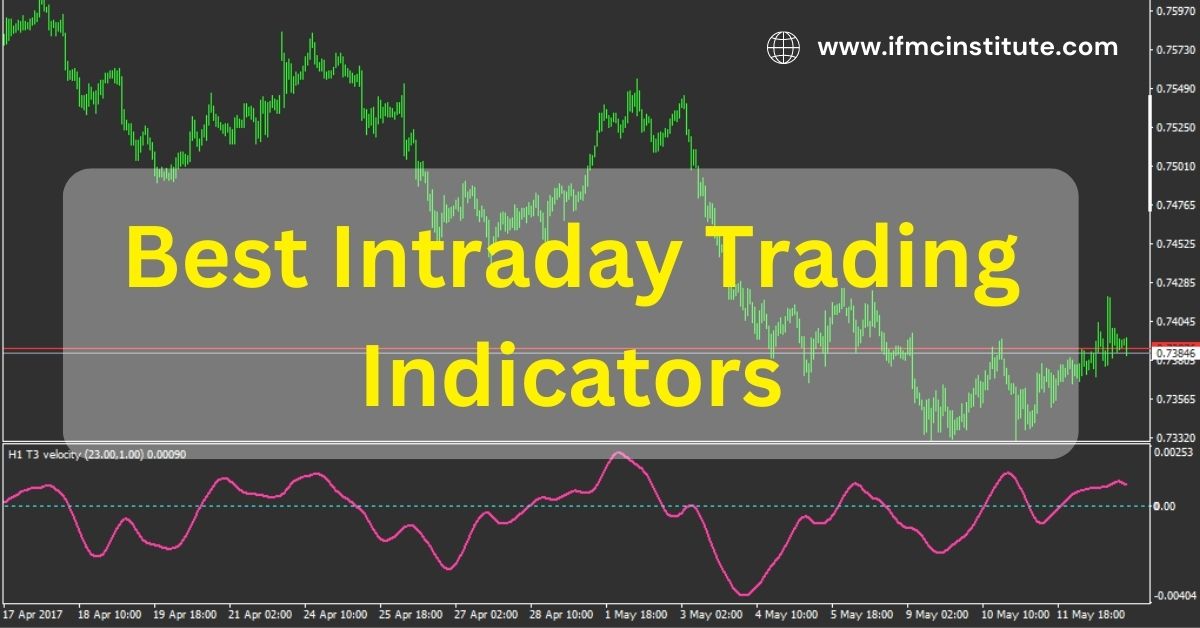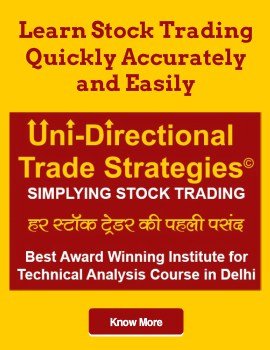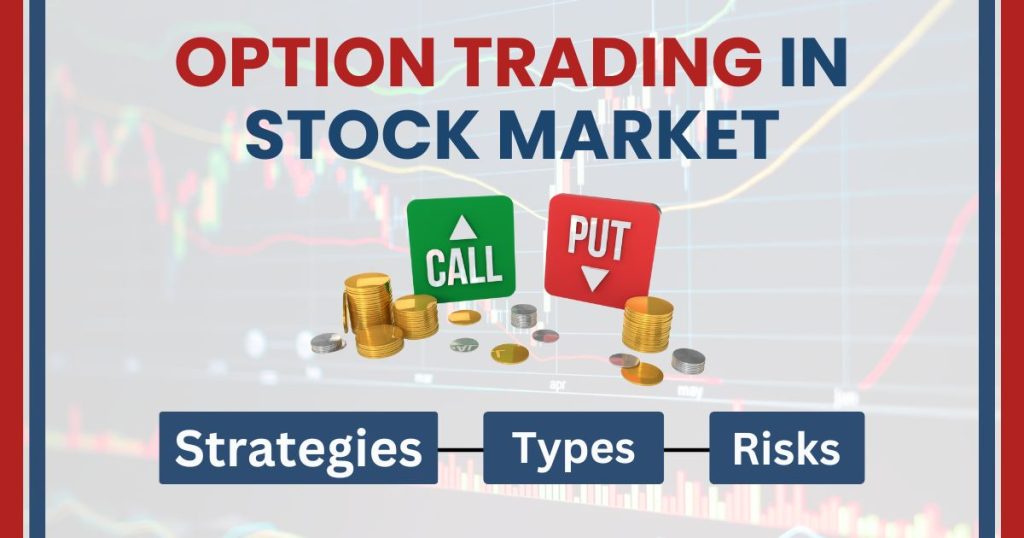Intraday trading strategies are critical to success in the stock market. Intraday trading is the process of buying and selling stocks within the same day, and it requires a different approach than other types of stock trading. When intraday trading, investors need to be aware of different factors that can affect stock prices throughout the day, such as news announcements, earnings reports, and economic data releases.
They also need to have a strategy for managing their position, so they don’t get caught up in the volatile swings that can occur during the day.
The most successful intraday traders have a plan for managing their risk, and they stick to it. They know when to get in and out of a position, and they always take losses quickly. Intra day trading can be a profitable way to trade the markets, but only if you have a sound strategy in place.
Table of Contents
ToggleEntry and Exit strategies the timing is crucial
When it comes to intraday trading strategy, intraday trading timing is everything. You need to know when to enter a trade in order to maximize your profits, and you need to know when to exit a trade in order to minimize your losses. But how can you determine the best time to enter or exit a trade? The answer lies in using entry and exit strategies.

There are a number of different entry and exit strategies that you can use, but one of the most popular is known as the moving average crossover. This strategy uses two moving averages – a long-term moving average and a short-term moving average – to generate buy and sell signals. When the short-term moving average crosses above the long-term moving average, it indicates that an uptrend may be beginning, and traders will look to enter long positions. Similarly, when the short-term moving average crosses below the long-term moving average, it indicates that a downtrend may be beginning, and traders will look to enter short positions.
The moving average crossover is just one example of an entry or exit strategy – there are many others that you can explore. The important thing is that you find a strategy that works for you and that you stick with it. With a little practice, you’ll be able to time your trades perfectly – and reap the rewards!
Trade strong stocks in an uptrend, weak stocks in a downtrend
When the market is in an uptrend, it is generally best to trade strong stocks that are exhibiting bullish momentum. This means that you should look for stocks that are trading near their highs and have a positive Relative Strength Index (RSI) reading.
Be patient and wait for the pullback
It is important to be patient and wait for a pullback before entering a trade. This will help you to avoid getting caught in a false move and will increase your chances of success.
Trade only with the current intraday trend
It is also important to trade with the current intraday trend. This will help you to avoid getting caught in a reversal and will increase your chances of success.
Take regular profits
Finally, it is important to take regular profits so that you can lock in your gains and reduce your risk exposure.
Risk-Reward Ratio
When it comes to intraday trading, the essential question to ask is how much risk you are willing to take in order to achieve a certain level of reward. This is known as the risk-reward ratio, and it is one of the most important factors to consider when developing a trading strategy. Generally speaking, the higher the risk-reward ratio, the more profitable the trade will be.

However, it is important to strike a balance between risk and reward in order to minimize losses. Successful intraday trading strategies India take both risk and reward into account in order to maximize profits while minimizing losses. By carefully evaluating the risk-reward ratios of each trade, traders can develop strategies that offer the best chance for success.
Choose the right platform
For Intraday Trading system, choosing the right platform is crucial. There are a lot of different platforms out there, and each one has its own pros and cons. Some platforms are more user-friendly than others, and some offer more features. So how do you choose the right platform for you? Here are a few things to keep in mind:
- How easy is the platform to use? If you’re new to Intraday Trading, you’ll want a platform that is easy to navigate and understand.
- What kind of features does the platform offer? Does it have all the tools and resources you need to be successful?
- How much does the platform cost? Some platforms charge monthly fees, while others are free to use. Choose a platform that fits your budget.
- Is the platform reliable? Make sure the platform you choose is stable and won’t crash when you need it most.
By keeping these factors in mind, you can choose the right Intraday Trading platform for your needs.

Learn more about Intraday Trading Screener
Do not challenge the market
Intraday trading is a popular form of trading among investors who seek to take advantage of short-term market movements. While there can be significant profits to be made, it is important to remember that the market is always changing and reacting to news and events.
As such, it is important to never challenge the market when making trades. Instead, it is best to focus on following the market’s lead and making trades that are in line with the current trend. By doing so, investors can minimize their risk and maximize their chances of success.
Research your target companies thoroughly
For intraday trading, one of the most important things you can do is research your target companies thoroughly. By taking the time to understand the financial health of a company and its recent performance, you can increase your chances of making a profit.
Furthermore, it’s important to stay up-to-date on news surrounding your target companies. If there are any positive or negative developments that could affect the stock price, you need to be aware of them. By doing your homework, you can give yourself a much better chance of succeeding in intraday trading.
Process of choosing stocks in intraday trading for beginners
For intraday trading, choosing the right stocks is essential. After all, even the best strategy will only be as successful as the stocks that are chosen. So, how can beginners ensure that they are making the best choices?
First and foremost, it is important to have a clear understanding of what intraday trading is and how it works, how to succeed in intraday trading.
Essentially, intraday trading involves buying and selling stocks within the same day. This means that stocks must be carefully selected in order to maximize profits.
For intraday trading examples, beginners should look for stocks that are highly volatile and have the potential to make big swings. In addition, it is important to pay attention to market news and trends.
By keeping up with current events, beginners can get a better sense of which stocks are likely to rise or fall in value. With careful selection and research, beginners can set themselves up for success in intraday trading.
Always set a stop-loss level
Intraday trading can be a great way to make some quick profits, but it can also be a recipe for disaster if you don’t know what you’re doing. One of the most important things to remember is to always set a stop-loss level.
This is the point at which you will sell your stock if it starts to fall, and it’s vital to have in place to prevent your losses from getting out of control.
Without a stop-loss level, you’re essentially gambling with your money, and that’s never a good idea. So make sure you take the time to learn about stop-loss levels and how to set them before you start trading. It could save you a lot of money in the long run.
Always close all your open positions
Intraday trading can be a great way to make quick and profitable trades. However, it is important to remember that intraday trading is a high-risk strategy, and should only be used by experienced traders.
One of the golden rules of intraday trading is to always close all your open positions before the end of the day. This ensures that you won’t be left holding onto a losing position overnight and that you won’t be subject to any gap risks.
Additionally, closing all your positions at the end of the day allows you to take a step back and assess your performance for the day. With this information in hand, you can adjust your strategy and make more informed decisions in the future.
So whether you’re new to intraday trading or an experienced trader, always close out your positions at the end of the day.
Choose liquid stocks
For intraday trading, choosing the right stocks is essential to success. One factor to consider is whether to choose liquid or illiquid stocks. Liquid stocks are those that are traded frequently and have high volume, which means there is less risk involved. Illiquid stocks are those that are not traded as often and may be more volatile, but they can also offer greater rewards. So, which is the better choice?
There are pros and cons to both liquid and illiquid stocks. Liquid stocks tend to be more stable and less risky, but they may also be less profitable. Illiquid stocks may be more volatile, but they can offer greater rewards. Ultimately, it depends on your own risk tolerance and goals. If you are willing to take on more risk for the potential of greater rewards, then illiquid stocks may be the better choice for you. However, if you prefer a more stable and predictable investment, then liquid stocks may be the better option.
Intraday trading strategies
Intraday trading strategies are methods of buying and selling stocks within the same day. Intraday traders seek to take advantage of small price movements in a stock.
These price movements can be caused by a number of different factors, including news announcements, earnings reports, or even analyst upgrades or downgrades.
Intraday traders typically hold their positions for a few hours or even just a few minutes. In order to be successful, intraday traders must have a solid understanding of technical analysis and market liquidity. They must also be able to manage risk and have the discipline to stick to their trading plan.
While there is no one-size-fits-all approach to intraday trading, there are certain strategies that can be used to improve chances of success. These include following trends, waiting for breakout opportunities, and scaling into and out of positions.
Intraday trading can be a lucrative way to make money in the stock market, but it requires skill and discipline to be successful.
Intraday time analysis
Intraday time analysis is a type of stock market analysis that focuses on price movements during the trading day. Many factors can influence stock prices, including news events, economic indicators, and even the time of day. By analyzing how prices change during the day, traders can get a better sense of which factors are causing price movements and make more informed trading decisions. Intraday time analysis can be used to trade stocks, options trading, futures, and other financial instruments. It is an essential tool for traders who want to maximize their profits. Straddle is considered one of the most successful options strategies in India.
Check: Best Intraday Trading Indicator
Introduction to trading strategies
When it comes to trading stocks, there are different approaches that can be taken in order to turn a profit. Some people take a long-term approach, investing in companies that they believe will be successful over the course of several years. Others take a more short-term approach, looking to buy and sell stocks quickly in order to capitalize on fluctuations in the market. This latter approach is known as day trading, and it can be an effective way to make money if you have a good understanding of the market and know how to identify profitable trades.
There are a variety of different intraday trading strategies that day traders can use, and each has its own benefits and risks.
Momentum trading strategy
Momentum trading is a strategy that involves buying and selling assets based on whether they are gaining or losing momentum.
For example, a trader might buy a stock that has been rising in price for several days in a row and sell it when the price starts to fall. The goal of momentum trading is to profit from assets that are moving quickly in one direction or another. While this can be a profitable strategy, it is also risky, as prices can move very rapidly and unexpectedly.
For this reason, momentum traders need to be very careful in choosing which assets to trade and when to enter and exit their positions. Those who are new to this strategy should paper trade first or use other risk management tools before trading with real money.
Gap and Go Trading Strategy
The Gap and Go! Trading Strategy is the perfect strategy for day trading the stock market. It’s a simple, straightforward strategy that anyone can learn and implement.
Here’s how it works: you buy a stock when it gaps up at the open, ride it for a few minutes to a few hours, and then sell it when it reverses and starts to head back down. That’s it!
The Gap and Go! Trading Strategy is all about timing your entries and exits so that you can maximize your profits while minimizing your risk. And the best part is that this strategy can be used in any market conditions – whether the market is going up, down, or sideways. So if you’re looking for a simple, effective way to trade the stock market, then the Gap and Go! Trading Strategy is the perfect strategy for you.
Bull Flag Trading Strategy
The Bull Flag Trading strategy is a simple and effective way to trade stocks. It is based on the idea that prices tend to move in cycles, and that by identifying the beginning of a new cycle, you can enter the market at an opportune time. The strategy involves four steps: identifying a bullish trend, drawing a flag pattern, entering a long position, and placing a stop-loss order. If executed correctly, the Bull Flag Trading strategy can provide excellent opportunities for profit.
Breakout trading strategy
The breakout trading strategy is a simple yet effective way to trade the markets. The key to this strategy is to identify a stock or other asset that is showing strong signs of breaking out from a recent consolidation period.
Once you have identified such a stock, you would then buy it as it breaks above the previous high, with the aim of selling it at a higher price. While the breakout trading strategy can be used in any market and on any time frame, it is best suited to the volatile and fast-moving world of cryptocurrency trading.
Due to the large and ever-changing range of cryptocurrencies available, there are always plenty of opportunities for profit from breakout trading.
Moreover, cryptocurrency markets are open 24/7, providing ample opportunity to trade around the clock. For those looking to take advantage of the breakout trading strategy, the cryptocurrency markets are definitely worth considering.
Pull back trading strategy
The Pull back trading strategy is a simple yet effective way to trade the markets. It is based on the premise that after a market moves up or down in price, it will usually retrace or “pull back” part of that move before continue in the original direction. This retracement can provide an opportunity for traders to enter the market in the direction of the original move with a smaller risk, as the market has already shown some signs of strength or weakness.
There are a few key indicators that can be used to identify potential pullbacks, such as Fibonacci levels, support and resistance levels, and moving averages. Often, a combination of these indicators will provide the best results. Traders should experiment with different combinations to see what works best for them. With practice, the Pull back trading strategy can be a powerful tool for profiting in the markets.
Pivot Point strategy
The Pivot Point strategy is a simple and effective way to trade the financial markets. It is based on the idea that the market is constantly changing and that price will always find a new level, or pivot point.
The key to this strategy is identifying the major levels of support and resistance, often formed by previous highs and lows. These levels can be used to enter and exit trades, as well as to place stop-loss orders.
The Pivot Point strategy can be used in any time frame, but it is most commonly used in the 1-hour chart. This timeframe provides enough data to identify significant levels of support and resistance, but it is short enough to allow for quick and profitable trades.
Moving average crossover strategy
The moving average crossover strategy is a tool that investors can use to identify potential buy and sell points. The strategy involves taking two moving averages – one short-term (below the moving average) and one long-term – and using them to generate signals. When the short-term moving average crosses above the long-term moving average, it is typically seen as a buy signal, as it indicates that the short-term trend is starting to move up. Similarly, when the short-term moving average crosses below the moving average the long-term moving average, it is often seen as a sell signal, as it suggests that the short-term trend is starting to move down.
While the moving average crossover strategy can be a helpful tool, it is important to remember that it is not perfect. There will be times when the moving averages will give false signals, so it is important to use other technical indicators to confirm any signals generated by the moving averages. Additionally, it is worth noting that the moving average crossover strategy works best in trending markets – in range-bound markets, the moving averages can generate a lot of false signals. Despite these limitations, though, the moving average crossover strategy can still be a useful tool for investors.
CFD strategy
A CFD, or contract for difference, is a type of financial derivative that allows investors to speculate on the price movements of underlying assets. Unlike traditional forms of investment, CFDs do not involve the purchase of the underlying asset. Instead, investors enter into a contract with a CFD provider, agreeing to pay or receive the difference in price between the opening and closing of the position.

CFDs can be used to trade a wide range of underlying assets, including stocks, commodities, currencies, and indices. One of the main advantages of trading CFDs is that they offer leverage. This means that investors can control a large position with a relatively small amount of capital.
Leverage can increase both profits and losses, so it is important to use it carefully. Another advantage of CFDs is that they are traded on margin. This means that only a small percentage of the total value of the trade need to be paid upfront, allowing investors to take on larger positions than would otherwise be possible. However, it is important to remember that margin trading can magnify both profits and losses.
Therefore, careful risk management is essential when using this type of financial derivative.

Learn more about “Online Trading Strategies Courses“
Book profit when the target is reached
When you are trading stocks, it is important to book profits when the target is reached. This ensures that you lock in your gains and minimize your losses. When you wait to book profits, the stock may continue to rise, but it may also start to fall again. By booking profits when the target is reached, you can protect your gains and avoid losing money.
Moreover, by booking profits early, you can free up capital so that you can buy more shares if the stock continues to rise. Therefore, booking profits when the target is reached is an essential part of intraday trading.
Learn Technical Analysis

Technical analysis is a tool that can be used by intraday traders to help them make better decisions about when to buy and sell stocks. While there is no guaranteed way to always pick winning stocks, technical analysis can give traders an edge by helping them to identify trends and patterns in the market. There are many different techniques that can be used for technical analysis, but some of the most popular include using charts and indicators. Learning how to use technical analysis effectively can take time and practice, but it can be a valuable tool for any trader who is serious about making money in the stock market. Learn Technical Analysis Course Online.
Top Intraday Trading Tips and Strategies
When it comes to best intraday trading, there is no shortage of strategies and tips out there. But with so much information available, it can be tough to know where to start. If you’re new to day trading, or just looking to brush up on your strategy, here are a few top share market trading tips intrada to help you get started:

- Have a plan. Before you enter any trade, it’s important to have a clear idea of what you’re trying to achieve. What is your profit target? When do you want to exit the trade? What are your risk management rules? Having a plan will help you stay disciplined and focused when the markets are moving fast.
- Use limit orders. A limit order is an order to buy or sell a security at a specific price. By using limit orders, you can ensure that you’re only entering trades that meet your criteria. This can help you avoid bad trades and protect your capital.
- Manage your risk. Risk management is essential in day trading. You need to carefully consider how much risk you’re willing to take on each trade. Remember, even the best intraday traders make losing trades sometimes. By managing your risk, you can ensure that losses don’t wreck your account.
- Stay disciplined. Day trading can be emotionally stressful. It’s important to stay disciplined and stick to your plan, even when the markets are volatile. If you find yourself emotionally attached to a trade, it’s time to take a break away from the computer and take a break.
By following these tips, you’ll be well on your way to success in best intraday trading. Just remember: there is no perfect strategy, so don’t be afraid to experiment and find what works best for you.
Freeze the entry and exit price
Despite the many benefits of intraday trading, it can also be risky. One way to minimize risk is to freeze the entry and exit price. This means that you will only trade at the price you entered at, and if the price moves against you, you will still exit at your original price. This ensures that you will never lose more than you intended to, and it can help you to stay disciplined in your trading career. In addition, freezing your prices can help you to avoid emotional decisions. If you are feeling panicked about a losing trade, for example, you can be tempted to exit early and take a loss. By freezing your prices, you remove this temptation and give yourself time to think more clearly about your trades.
Learn More: Quick Trader Course






















